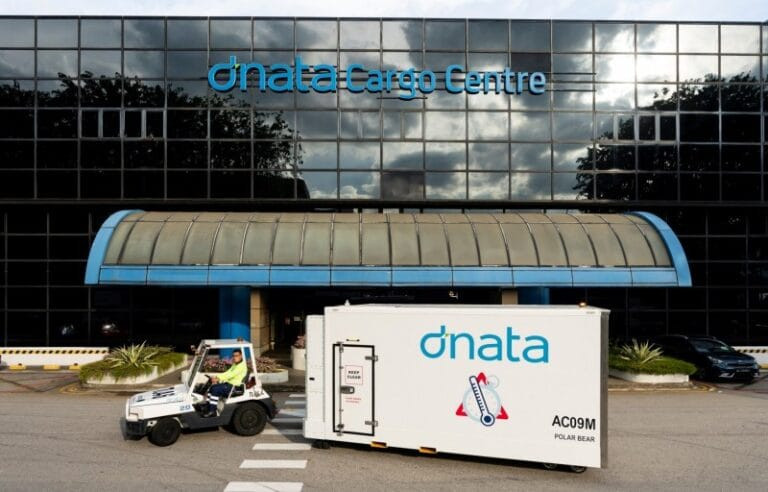- dnata Singapore is driving regional digitalisation through flexibility, adopting modular, scalable systems that deliver value immediately without waiting for uniform infrastructure or regulations across Southeast Asia.
- Its approach blends advanced tools with practical rollout, from AI-driven ULD planning and live milestone tracking at Changi to lightweight visibility platforms tailored for less mature markets.
- Collaboration and regulation are key to progress, with dnata working alongside CAAS and Changi Airport Group to prove that digitalisation enhances compliance and competitiveness—setting a blueprint for the wider ASEAN cargo community.
Southeast Asia is moving fast in air cargo, but not always in the same direction. While hubs like Singapore race ahead with smart ULD planning and real-time milestone tracking, many neighbouring airports still operate on paper and manual processes. For dnata Singapore, the question isn’t whether the region should digitalise — it’s how to move forward without waiting for everyone to catch up.
“We adopt a flexible, tailored approach rather than a one-size-fits-all strategy,” said Sam Gould, Head of Cargo at dnata Singapore. “Our goal is to deliver immediate value without waiting for the perfect environment.”
It’s a pragmatic stance in a market where regulatory frameworks, airport infrastructure, and digital literacy vary widely. But it also reflects a deeper shift in strategy: digital cargo doesn’t have to be all-or-nothing. It can scale — if you design it that way.
Modular systems for uneven markets
At Singapore’s Changi Airport, dnata’s digital infrastructure is already mature. Stakeholders can track every milestone of a shipment, check customs status, monitor truck movements, and make payments — all in real time. But that model doesn’t simply lift and shift across the ASEAN region.
“In less mature markets, we deploy modular solutions that can scale as infrastructure and digital literacy improve,” Gould said. That means starting with the basics — shipment visibility, acceptance automation, transporter scheduling — and layering in complexity only where it’s viable.
One example is dnata’s forwarder platform, which shows live status updates to cargo agents (limited to their own shipments) and helps transporters plan trips more efficiently based on cargo availability. “The impact is clear — faster acceptance, fewer exceptions, and improved real-time visibility for our customers,” said Gould.
Behind the scenes, dnata has also rolled out AI-powered ULD planning and advanced dimensioning systems to improve safety and optimise space utilisation — tech rarely seen outside top-tier hubs.
Driving adoption in a manual market
Technology is only half the battle. In many Southeast Asian markets, forwarders still work manually — not because they want to, but because legacy systems and process inertia make change hard. dnata’s strategy to drive digital adoption starts by making the benefits tangible.
“Reduced acceptance times, fewer disputes, and real-time shipment visibility,” Gould said. “We position digitalisation not just as a convenience, but as a necessity.”
That message is getting louder across the region, as airlines and regulators begin to mandate digital documentation. The pressure to adapt is now coming from multiple sides — with compliance, speed, and capacity all part of the conversation.
Still, resistance lingers. Smaller markets may see full-scale digitalisation as expensive or misaligned with their traffic levels. But that’s where dnata’s modular thinking becomes essential: build tools that work with what’s available, and expand from there.
Regulation: friction or fuel?
One of the most persistent obstacles to regional digitalisation is regulation — especially customs and security rules that still require paper documentation or manual processing.
But Gould sees regulation as a double-edged sword: it can be a friction point, or a powerful catalyst. At Changi, dnata works closely with the Civil Aviation Authority of Singapore (CAAS) and Changi Airport Group (CAG) to align on digital standards. That partnership has enabled initiatives like the Truck Dock Slot Booking system, now rolled out airport-wide.
“Our aim is to demonstrate that digitalisation enhances compliance, improves security, and strengthens trade competitiveness,” he said.
If regulators see digital systems as a path to tighter control — not less — then adoption accelerates. dnata is leaning into that framing.
Changi as a model, not a one-off
There’s no question that Changi Airport is a digital frontrunner, but dnata is careful not to treat it as the exception that proves the rule.
“Success stems not just from technology, but from collaboration,” said Gould. Shared standards, community platforms, and collective buy-in from airlines, handlers, and authorities have all contributed to progress. Even if smaller markets can’t replicate Changi’s scale, they can still apply the same logic: build ecosystems, not silos.
Looking ahead, Gould believes the next five years will bring a tipping point — driven less by innovation than by economic necessity. Rising costs and a shrinking margin for inefficiency will make digitalisation a default requirement, not a strategic choice.
But the biggest risk remains uneven adoption. “Different countries, different priorities, and varying levels of digital maturity,” he said. “That’s why dnata Singapore advocates for regional coordination, invests in scalable platforms, and remains committed to bringing every stakeholder along on the digital journey.”





